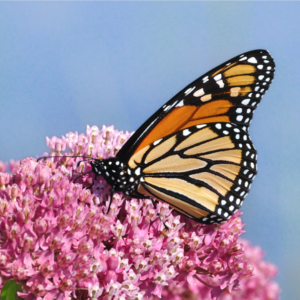
Did you know that Monarch Butterfly caterpillars ONLY eat milkweed? Due to habitat loss, pesticide use, and global climate change, there are fewer milkweed plants in our ecosystem, which is having devastating effects on Monarch populations. You can help our Monarch Butterfly Pollinator Pals by starting some milkweed seedlings in your own home!

Thank you for learning about these 8 important native pollinator species! For photo credits and resources, go to shoresh.ca/pollinatorpals.
Have fun exploring!



